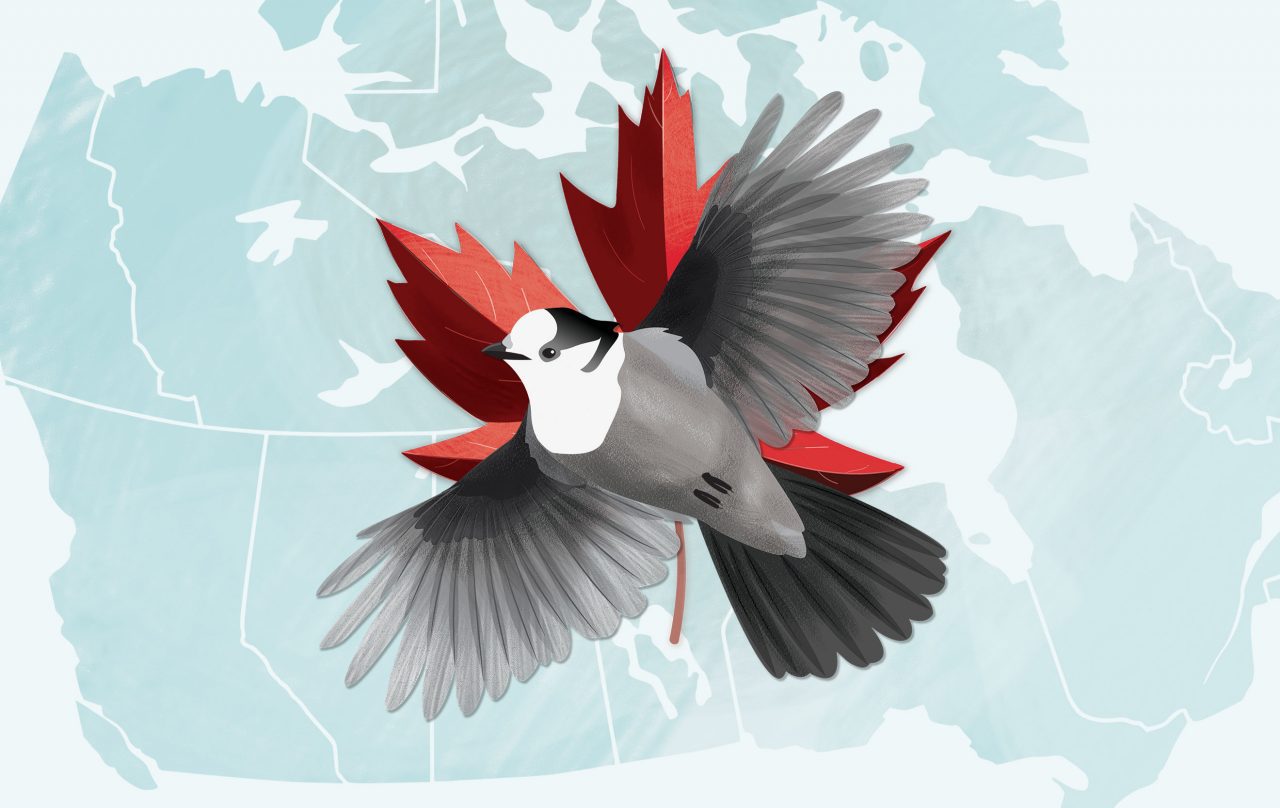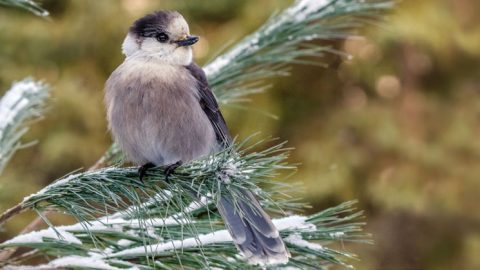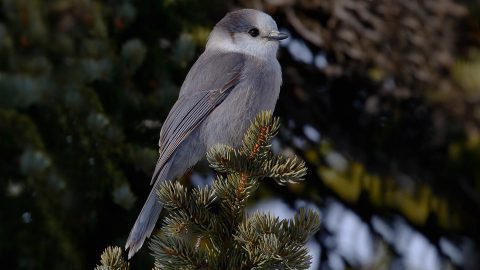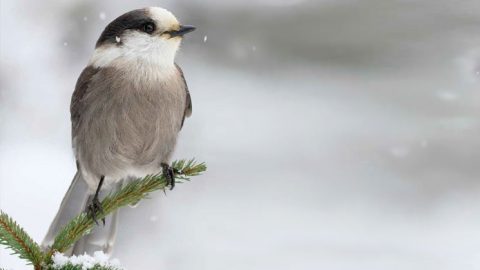Canada’s Gray Jay Debate
By Gustave Axelson, with reporting by Kathi Borgmann
January 8, 2018
From the Winter 2018 issue of Living Bird magazine. Subscribe now.
Unlike the United States with its Bald Eagle, and Mexico with its Golden Eagle, Canada doesn’t have a national bird.
North America’s northern dominion has a national emblem (the beaver, not the maple leaf), a national horse (the Canadian horse, of course), even national winter and summer sports (hockey and lacrosse, respectively). But no national bird.
In 2016, The Royal Canadian Geographic Society sought to fix that with a public contest to name an avian icon. The Common Loon won the popular vote, and the Snowy Owl took second. But ornithologists intervened and persuaded the society to choose the third-place finisher, the Gray Jay, partly on the reasoning that the loon is already the official bird of Ontario and Snowy Owl a symbol of Quebec. The Gray Jay was unaffiliated, and it occurs in every province, a bird that all Canadians can claim.
To the aptly named David Bird, an ornithologist at Montreal’s McGill University, this bird’s biology makes it a perfect symbol for his nation. He notes that Gray Jays are monogamous, refuse to migrate when the weather turns cold, are smart enough to store up food to last the winter, and are known to seek out people for provisions. “That’s loyal, tough, intelligent, and friendly,” Bird says. “That, to me, epitomizes Canadians, if I can brag a bit.”
“It’s a wonderful poster child for boreal forests. The only downside is that the public doesn’t know it that well,” Bird says. “Well, my answer to that is, ‘Get off your duffs, get out to our national and provincial parks, and meet this bird.’ And I guarantee you, the Canada Jay will meet you with great friendliness.”
Bird refers to the “Canada Jay” on purpose, which was the common name for Perisoreus canadensis back in the early 20th century. But in 1957 the former American Ornithologists’ Union (now the American Ornithological Society) declared the species’ common name to be “Gray Jay.” The AOU was actually in the process of lumping several Perisoreus species under a single common name, and a nonregional moniker may have avoided confusing constructions of subspecies names (such as the “Oregon Canada Jay”). Nonetheless, the AOU used an American spelling (“gray” instead of “grey”), which has now raised a bit of ire in the north.
Update on the Name Change
“It is entirely inappropriate for the Canadian national bird to have a name imposed by a self-appointed foreign body,” said Dan Strickland, the retired chief naturalist at Ontario’s Algonquin Provincial Park, to The New York Times.
More About Canada's Gray Jays
In 2017 the Society of Canadian Ornithologists passed a resolution to rechristen the bird as the Canada Jay. And there were high hopes among Canadian birders that Prime Minister Justin Trudeau would officially declare a new national bird in honor of Canada’s 150th anniversary.
“But we ran into a bit of a brick wall with the Heritage Ministry,” says Bird. The sesquicentennial came and went with no government action.
So now Canadian birders turn their hopes to Vancouver, where thousands of the world’s top bird scientists will gather for the International Ornithological Congress in August 2018. It’s like the Olympics of ornithology, “really the perfect global stage for proudly announcing the Canada Jay as our national bird,” says Bird.
The federal Department of Canadian Heritage does not seem interested, however. In a September 2017 email, a media relations representative with the heritage ministry wrote: “At this time, the Government of Canada is not actively considering proposals to adopt a bird as a national symbol.”

All About Birds
is a free resource
Available for everyone,
funded by donors like you
American Kestrel by Blair Dudeck / Macaulay Library





